Easy vegan seitan recipe. It's never been easier to make seitan from scratch. Seitan is high in protein and low in carbs and fat and has zero cholesterol. It's a fantastic meat substitute and has been around for centuries. It's chewy versatility is a great meat replacement for vegans, vegetarians and flexitarians. Stove top and instant pot directions.
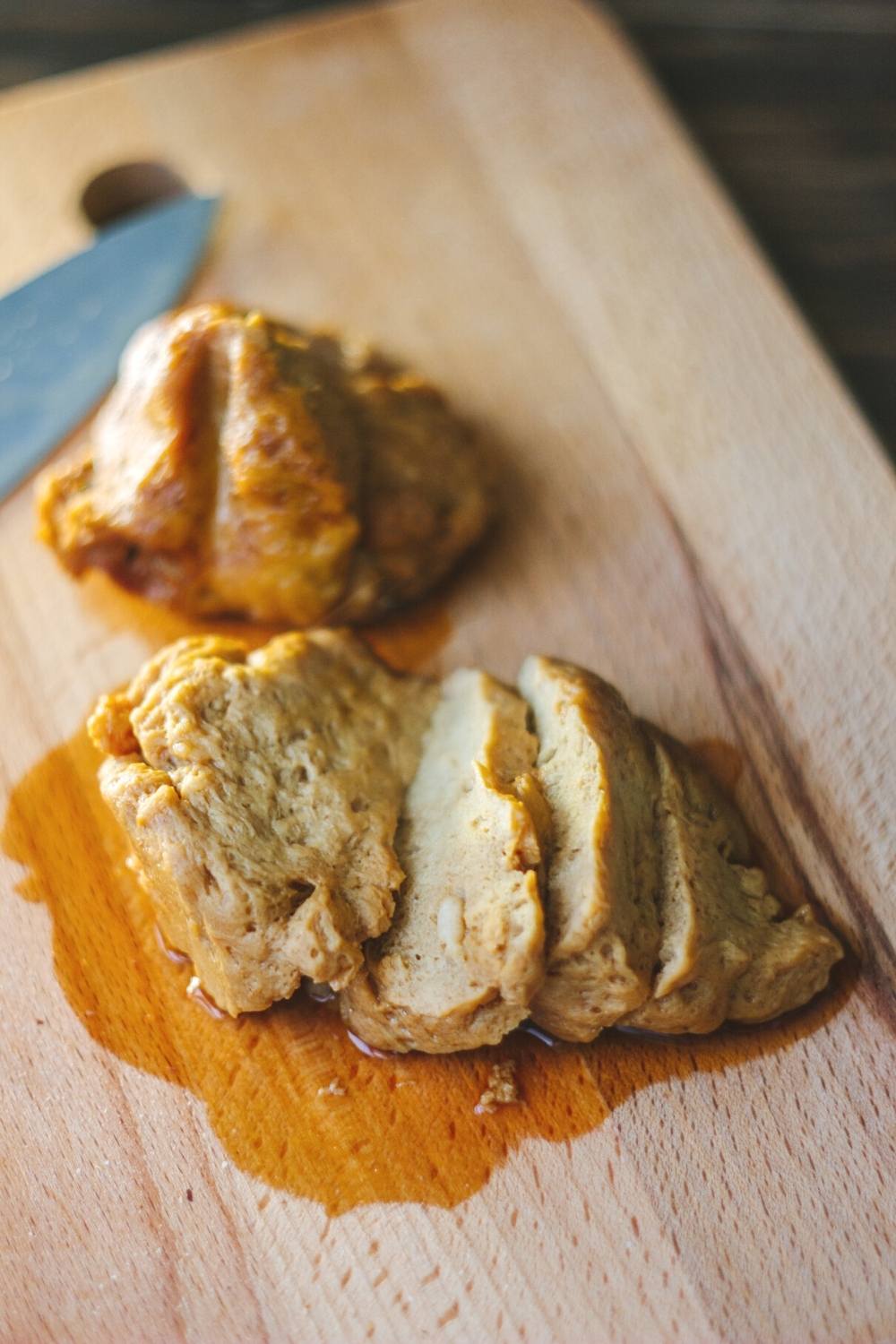
Jump to:
🌱 What is seitan?
Seitan results when you mix vital wheat gluten flour with broth and seasonings. Vital wheat gluten is made when you separate the starch from the protein in wheat flour. It's pure wheat protein. It's also called wheat meat.
Gluten is the main protein found in wheat. It's what gives bread dough its elastic and stretchy nature and makes bread nice and chewy.
🧘♀️History
Even though it seems like a fad that only vegans eat, seitan has been around for a long time.
Buddhist monks from China first started eating seitan around 1500 years ago. They discovered it after soaking their bread dough in water, which resulted in rinsing all the starch off, and leaving a ball of chewy protein behind.
People even ate it during the great depression when meat was scarce and they needed their meals to be more filling.
💪 Nutrition
Seitan is a delicious meat alternative that is also an amazing source of protein. It has more protein than chicken and contains 70 grams of protein per 100 grams.
It's is also low in carbohydrates and fat. It's low in carbs because the starch and bran have been washed away to leave only the wheat gluten.
It also contains minerals like selenium, copper, calcium, iron and phosphorous.
If you're a vegan, make sure to also include beans in your diet since seitan doesn't have a high amount of the essential amino acid lysine.
🧂 Ingredients and substitutions
- Vital wheat gluten - This is the main ingredient in seitan. It can be found in health food grocery stores, like a Whole Foods, or you can order it in bulk online. It's a lot more affordable that way.
- Seasonings - Onion powder, garlic powder smoked paprika (You can also use liquid smoke. This adds a nice meaty, smoky flavor) salt and pepper.
- Soy sauce - Adds savory, salty and umami flavor. Use liquid aminos or gluten free soy sauce if you're soy free.
- Nutritional yeast (this adds a savory flavor and some vitamin B12)
- Tahini (this adds a nice fatty richness and some more savory-ness) you can sub this for some olive oil or neutral tasting oil.
- Vegetable broth - You can also dissolve some bouillon cubes in boiled water to make your own broth. It's a lot cheaper. You can also make your own vegetable stock by simmering your vegetable scraps for an hour and adding salt. Then strain the vegetable scraps away.
- Chickpea flour - This is sometimes added to create a little more lightness to the seitan dough. If you don't have it on hand, feel free to leave it out. You an also blend up the wet ingredients with a can of drained and rinsed chickpeas for a boost of texture and protein.
👩🍳 Expert tips
- The secret to the perfect, meaty texture when making your own seitan is to make sure you don't boil it. This will create large pockets. You want a nice, gentle simmer. Bring the broth to a boil before adding the seitan, then turn it down to medium low once it reaches that heat. Add the seitan and let it gently simmer.
- Make sure to check the broth halfway through, to ensure it didn't all evaporate.
- Feel free to use any seasonings you'd like. The suggestions I give are just my personal preference.
- If you don't have nutritional yeast, don't worry. It's not super essential to the recipe, it just adds a deeper, savory flavor.
- The more you knead the dough, the chewier and tougher the seitan will get. So if you want your seitan to have a tender texture, only knead it for five minutes or so.
- If you want a firmer texture, like for a seitan roast, or seitan kebabs, knead it for at least 10 minutes and let it sit for 10 minutes before cooking, to let the gluten strands activate.
🔪 Directions
Make sure to scroll to the recipe card for full step-by-step instructions.
There are two ways to make homemade seitan:
The first way (takes longer):
There's the way you might have seen on tik tok (the washed flour method) where you make vegan chicken from all purpose flour by first making a dough.
Knead it and then let it rise for eight hours. Then rinse it until the water becomes clear and you're left with just the gluten. This takes over eight hours.
The second way (a lot quicker):
You can make it in about an hour by skipping the washing part and just starting with vital wheat gluten flour. This takes only 10 minutes to make and then it just simmers in a broth for an hour.
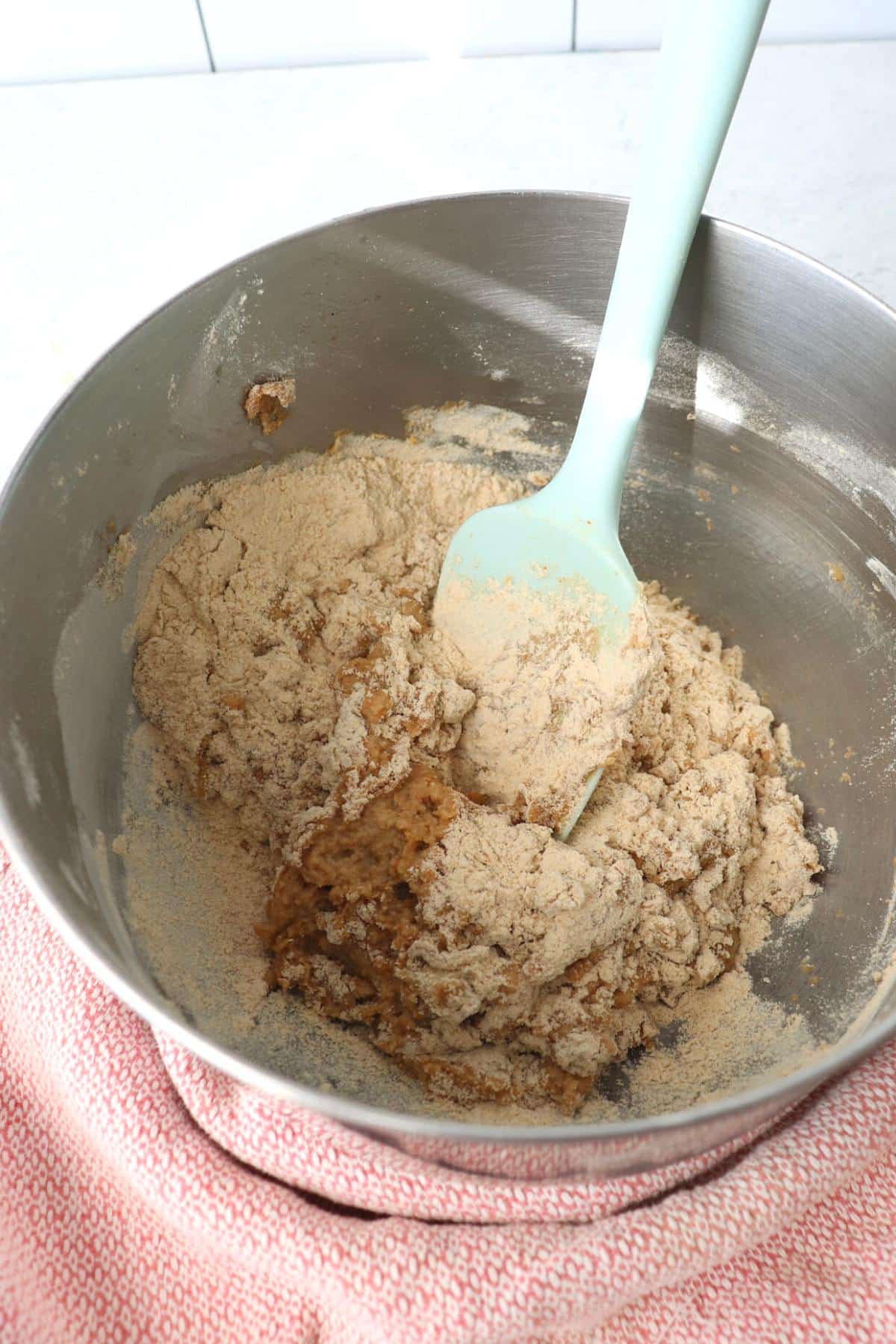
Step one - mix together the dry ingredients in a large bowl, then add the wet ingredients.
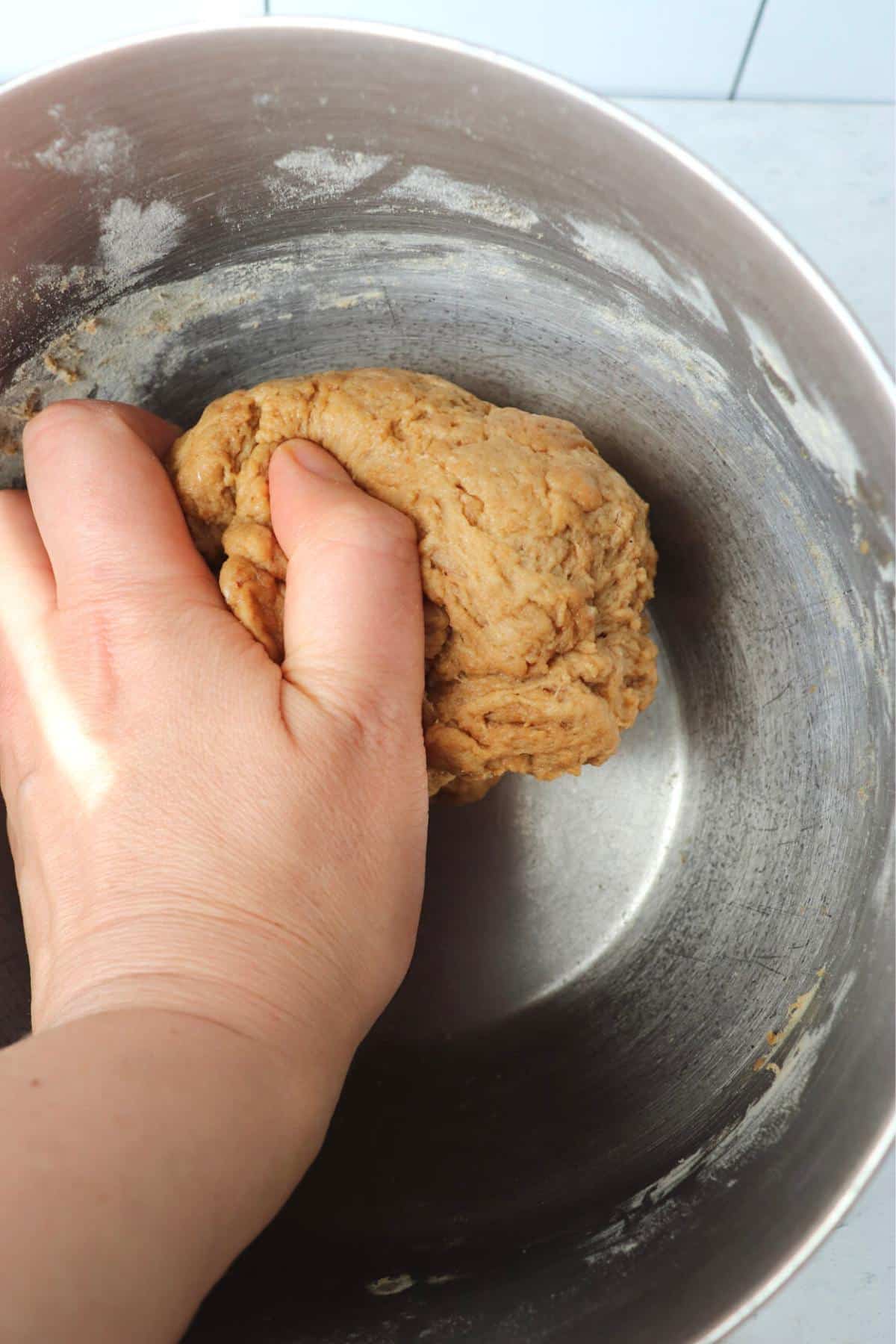
Step two - Form the dough into a ball and knead for about three minutes to help activate the gluten. Then let it sit for 15 minutes to help the dough rest and for the gluten to form even more.
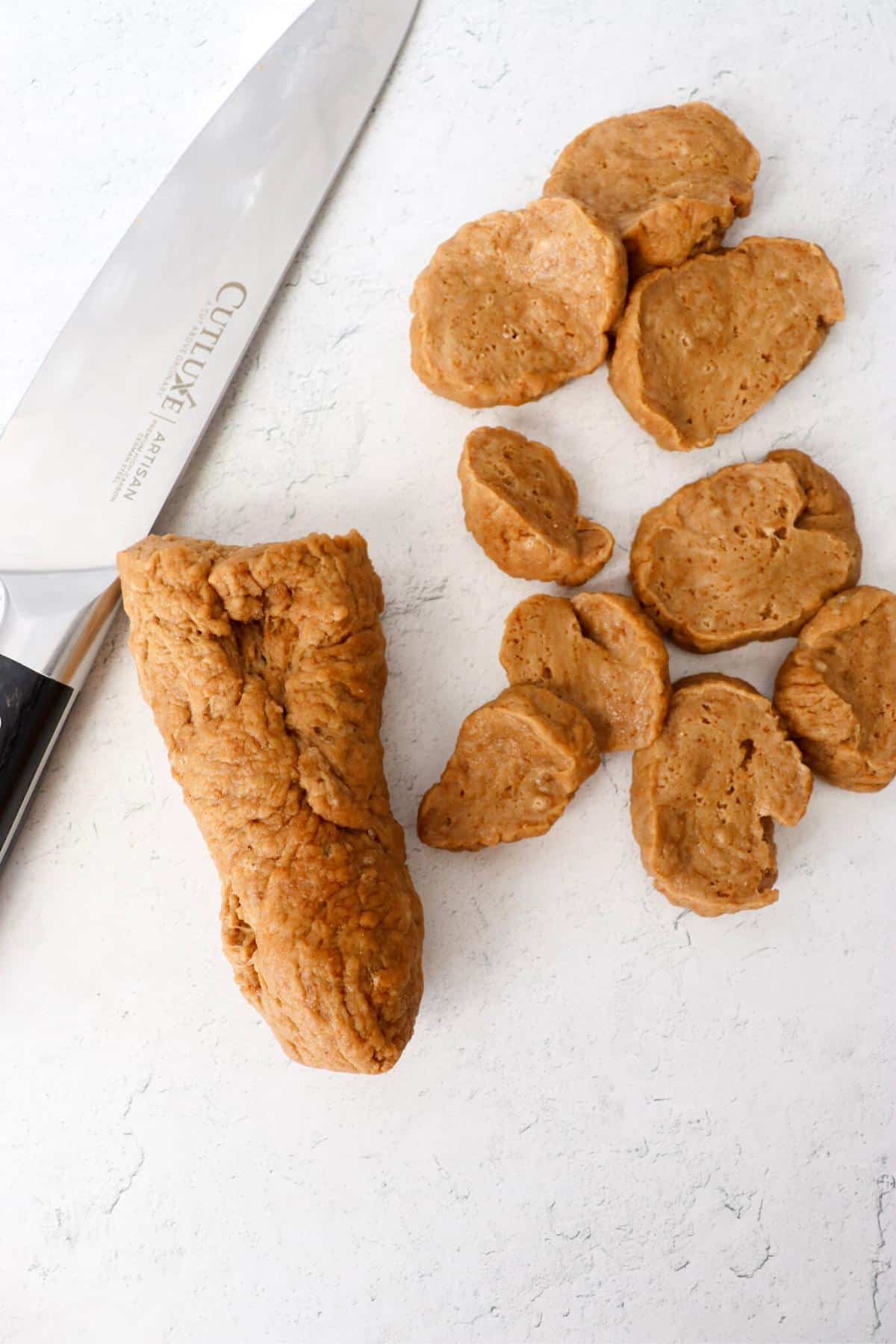
Step three - Cut the seitan dough in half, then roll each piece out into a log shape. It will want to snap back into its original shape so you have to work fast. Go along the length of the seitan and cut into smaller pieces. This will help it to cook faster.
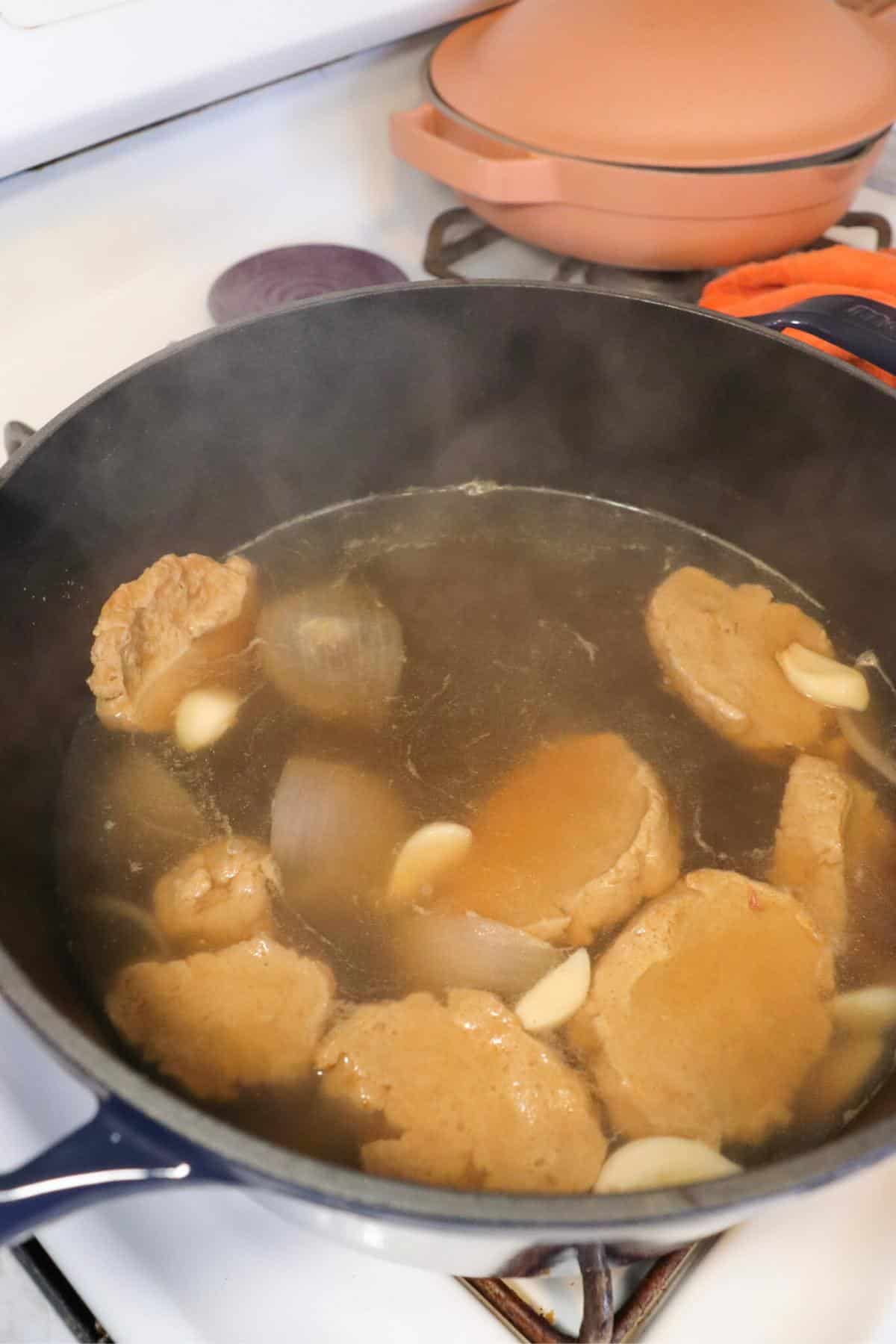
Step four - Pour some broth, onion, garlic and soy sauce in a dutch oven or large soup pot and bring to a boil, then turn it down to medium low. Carefully drop the seitan pieces into the broth. Let them gently simmer on a low simmer for 45-60 minutes. Make sure to not let it come to a boil while simmering or you will create large pockets in the seitan.
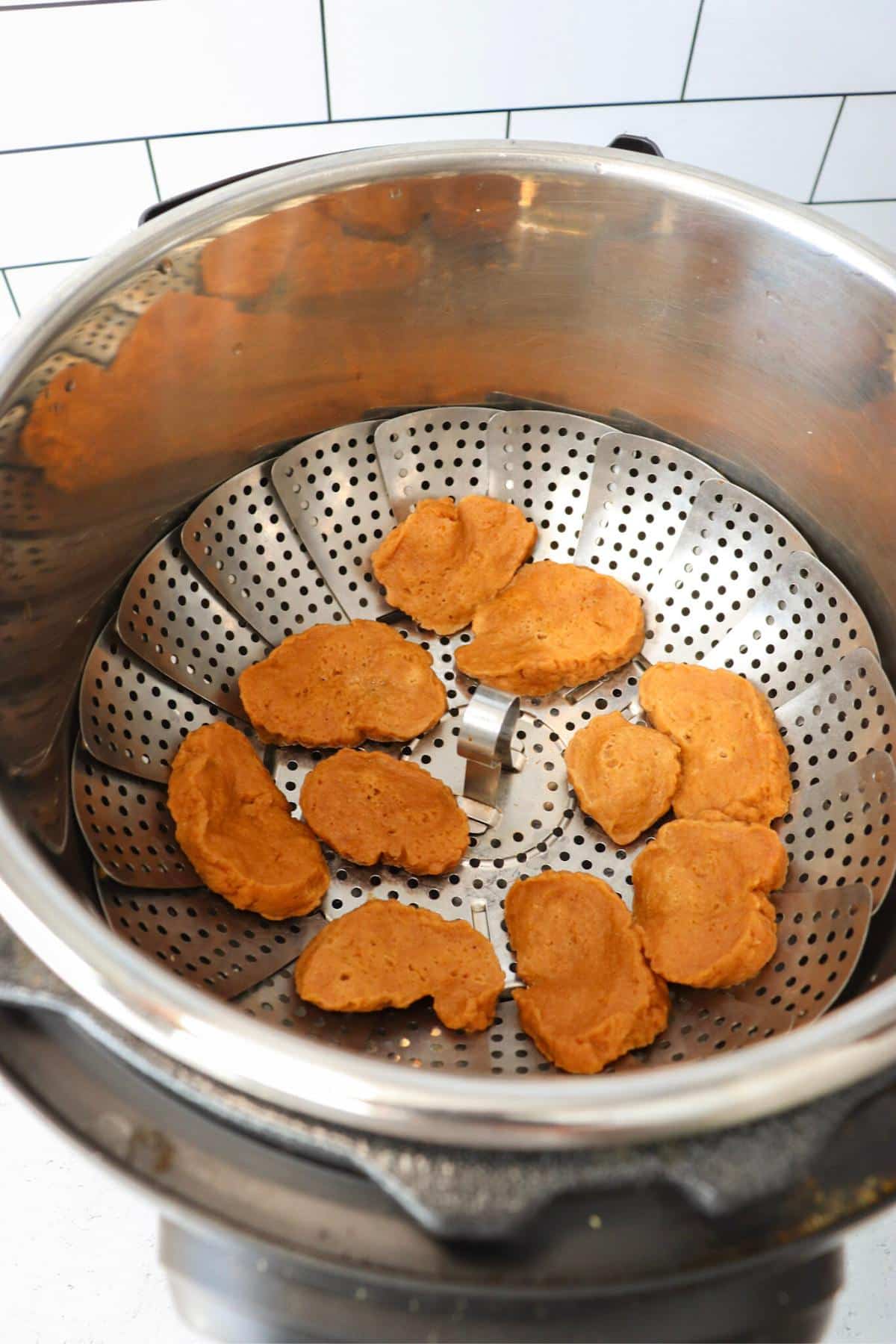
Optional variation to Steam - You can also steam the dough instead of simmering, for a chewier, firmer texture. You can do this on the stove or in the instant pot. Place it in a steamer basket in the instant pot with a cup of water, seal the lid and cook on high pressure for 45 minutes.
🌮 How to use
Before you're ready to use, try to squeeze as much liquid out as you can. Cut it into strips of bite sized pieces. Heat up a skillet and add oil, then fry each side until crispy. Then add your sauce of choice.
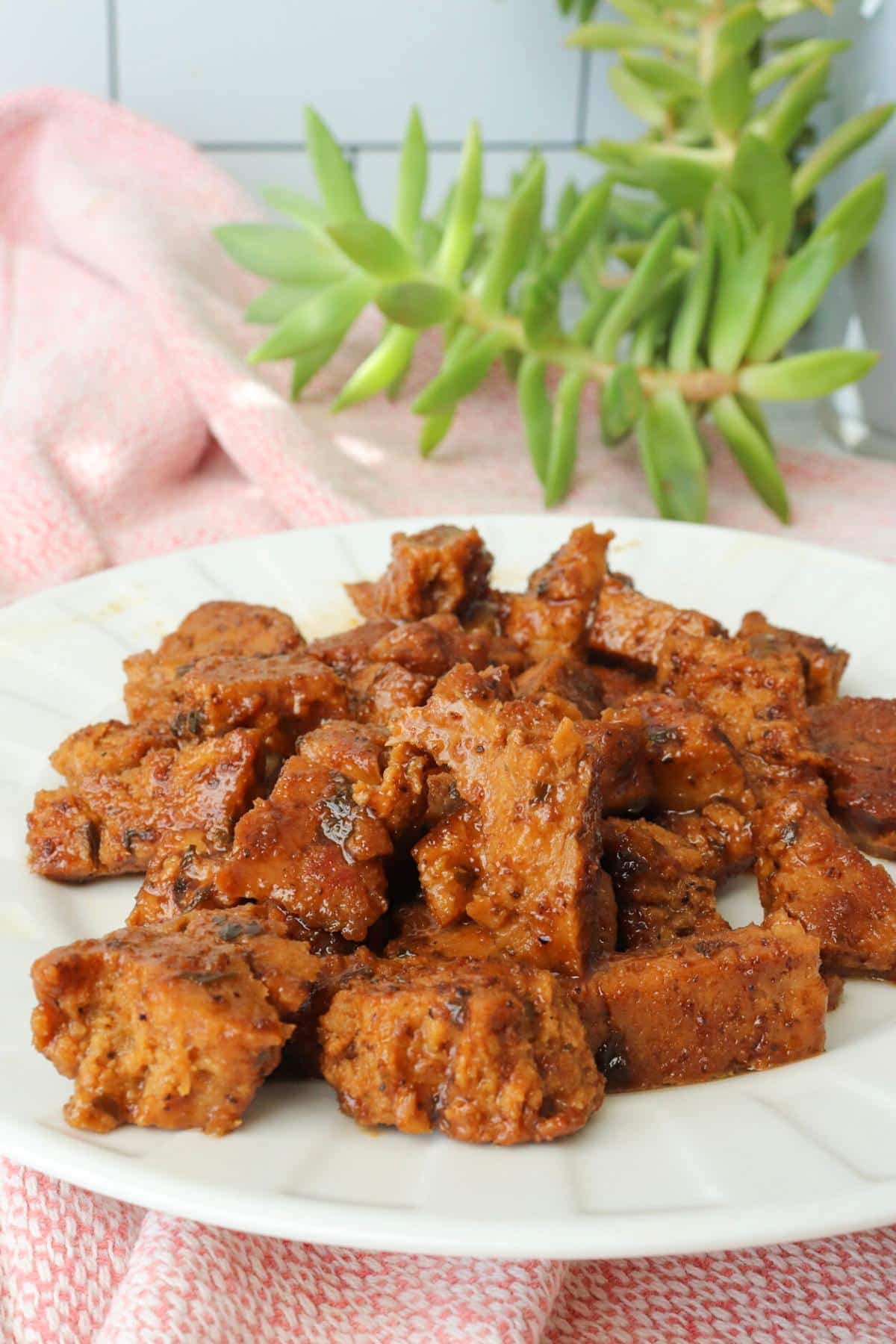
You can use seitan in any way that you would chicken, beef or tofu. Seitan chicken goes great in Asian recipes like Mongolian beef or a vegan butter chicken or a stir fry. Try these vegan steaks for summer cookouts.
I also love to marinate it in bbq sauce and then cook it on a grill, or cast iron skillet. Serve with a baked potato or vegetable like air fried asparagus or easy air fried zucchini.
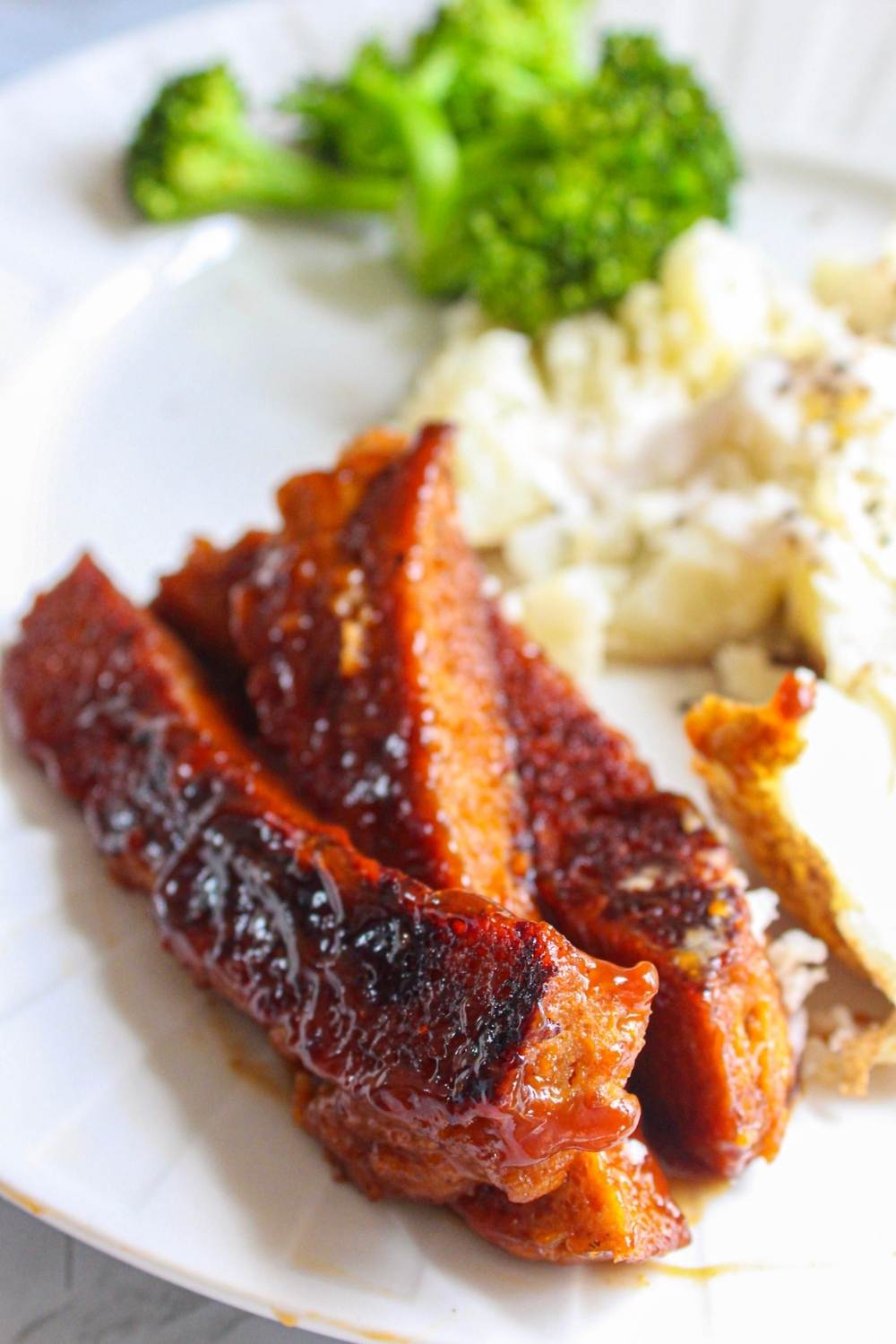
You can use seitan instead of chicken in this Vegan chicken noodle soup
Cut seitan into strips and marinate in a bottled beef marinade (most are accidentally vegan), then add to the baking sheet to make these Baking sheet fajita.
Use marinated and sautéd seitan instead of jackfruit in these Vegan nachos.
❄️ Storing tips
You can keep seitan in its broth in the fridge in an airtight container for about 5-7 days. I also love straining the broth away and letting it sit in a marinade in the fridge. The texture of seitan changes slightly as it cools. It won't be as puffy.
You can also freeze it after straining the liquid away and putting it in a freezer friendly air tight bag.
❓ FAQ's
Unless you have celiac disease or gluten sensitivity, seitan is completely safe and healthy to eat.
Seitan is a great source of protein for vegans and vegetarians.
It is significantly cheaper to make your own seitan at home. You can buy a 20 ounce bag of vital wheat gluten flour for about $8-$9 and you can make this recipe (of 4 servings) 4-5 times. So that comes out to 16-20 servings. A package of pre-made seitan is around $5-$6 for 2 servings.
Seitan is really easy to make in the instant pot. Add a cup of water or broth. Then add a steamer basket. Place your dough on the steamer basket and add the lid and set to seal. Cook on high pressure for 45 minutes. Let the pressure release naturally for 10-15 minutes, then quick release the rest of the way.
Seitan is high in protein, low in calories, low in fat and has zero cholesterol. It's a healthy meat substitute for vegans, vegetarians, or those looking to limit their meat intake. Since it's make from wheat gluten, it's not a good idea to eat it if you have celiac disease.
🍔 More seitan recipes
If you loved this recipe, leave a 5 ⭐️ rating on the recipe card and comment below!
📖 Recipe
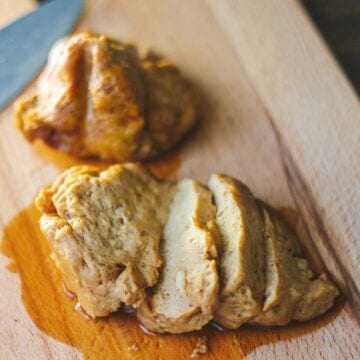
Easy homemade seitan recipe
Equipment
- Large soup pot
Ingredients
Seitan
- 1 cup vital wheat gluten flour
- 1 teaspoon garlic powder
- 1 teaspoon onion powder
- 2 tablespoons nutritional yeast (optional if you don't have this)
- ½ teaspoon salt
- ½ teaspoon smoked paprika
- 2 tablespoons tahini
- ¾ cups vegetable broth (or water)
Simmering broth (for stove top)
- 6 cups water
- 1 onion (quartered)
- 2 cloves garlic (crushed but whole)
- 1 tablespoon vegetable bouillon paste (or two vegetable bouillon cubes)
- 2 tablespoons soy sauce
Instructions
Make the dough
- In a large mixing bowl, mix together vital wheat gluten, salt, garlic and onion powder, smoked paprika and nutritional yeast.1 cup vital wheat gluten flour, 1 teaspoon garlic powder, 1 teaspoon onion powder, 2 tablespoons nutritional yeast, ½ teaspoon salt, ½ teaspoon smoked paprika
- Add the tahini and broth and stir until you make a ball.2 tablespoons tahini, ¾ cups vegetable broth
- Knead the ball for 5 minutes. The longer you knead, the more chewy and dense it will get. Knead for 10 minutes if you want it to be more chewy and firm. Cut the dough into four even pieces and let it rest while your broth comes to a boil.
Stove top directions
- Get a large soup pot on the stove and add all of the ingredients from the "simmering broth" section. Bring to a boil then turn down to medium low. Add in the seitan pieces and gently crack the lid. Gently simmer for one hour.6 cups water, 1 onion, 2 cloves garlic, 1 tablespoon vegetable bouillon paste, 2 tablespoons soy sauce
- Make sure it doesn't boil because it will create pockets in the seitan. You want small, gentle bubbles. Check after 30 minutes and add more liquid if it lost too much.
- After one hour, the seitan is ready to be used however you like. I love to keep it in a marinade in the fridge, until you're ready to cook it up. Seitan can be used any way you would cook chicken or beef. Cut it into pieces and fry it in a pan in some oil. After it's browned, add your favorite marinade.
Instant pot direcitons
- Add a cup of water or broth to the instant pot. Add a steamer basket and place the seitan dough in the basket. Add the lid and set the pressure cooker to seal. Cook on high pressure for 45 minutes. Let it naturally release for 15 minutes then quick release the rest of the way.
Video
Notes
Nutrition
The nutritional information on this website is only an estimate and is provided for convenience and as a courtesy only. The accuracy of the nutritional information for any recipe on this site is not guaranteed. It should not be used as a substitute for a professional nutritionist’s advice.


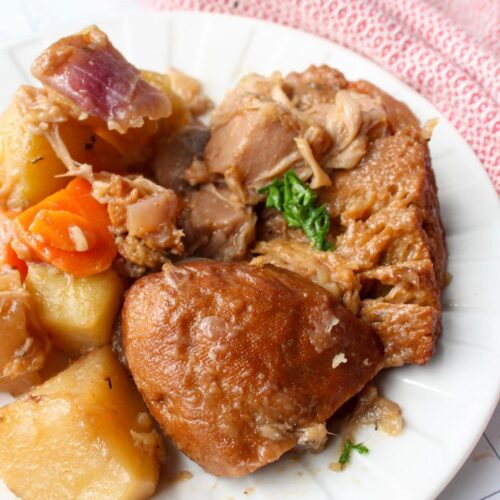
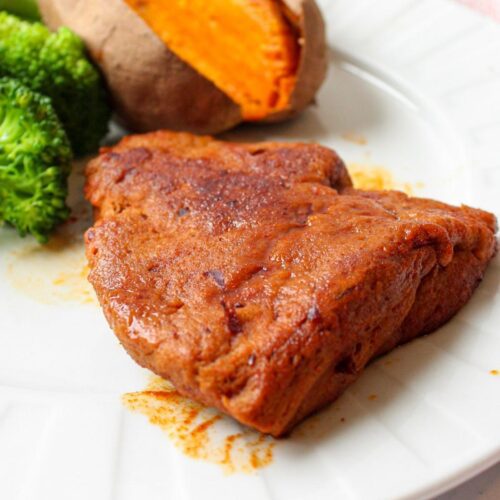
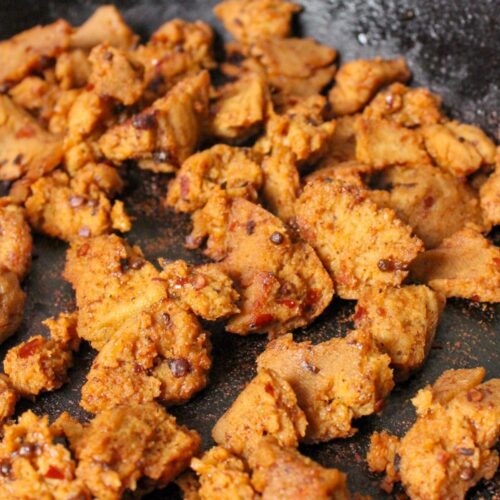
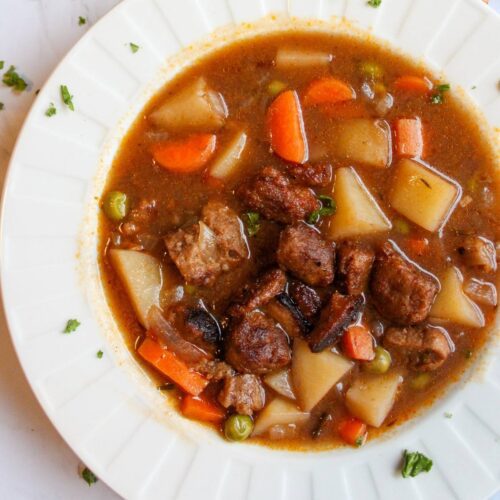
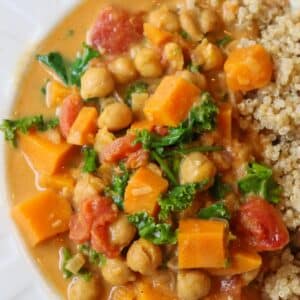
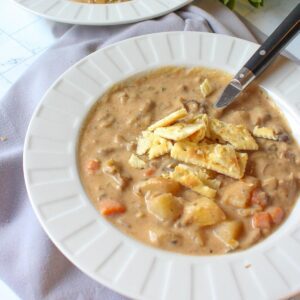
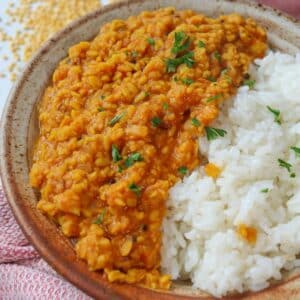
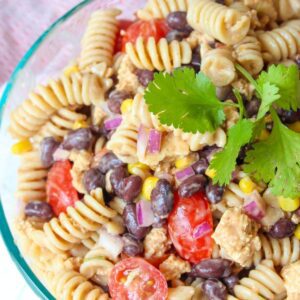

Nella
Hi Maria! So glad I found you ❤️ I have my seitan on the stove simmering away! Love the video! So helpful and so informative. I have stopped eating meat for a few months now and have been eating other types of protein, tofu, tempeh and seitan. I finally got the courage to make this recipe and am so excited to eat this! Very easy recipe to follow and excellent instructions. Thank you 🙏
Nele
This is my favorite seitan recipe! I wss looking for one that you wouldn't need to steam so this is perfect! I made it 4 times already 🥰
Maria
I love that you've been loving this recipe! It's my go-to recipe as well. I love how versatile seitan is and it's really so easy to make.
Debbie
Amazing
I bought all my ingredients, and was so intimidated to make this. Last night decided do it! WOW it's so good. Re-heating tonight with gravy and side of fried cauliflower. This is truly fantastic.
Thank you
Maria
Thank you, Debbie! I'm so glad you loved the recipe and it wasn't intimidating. Gravy and fried cauliflower sounds delicious with this!